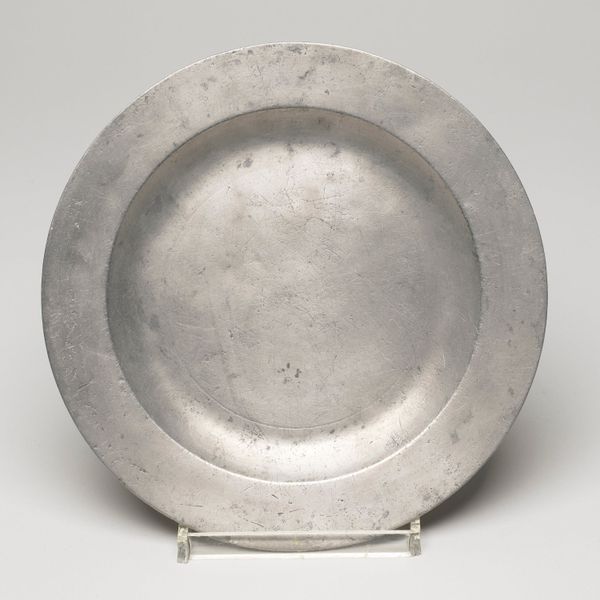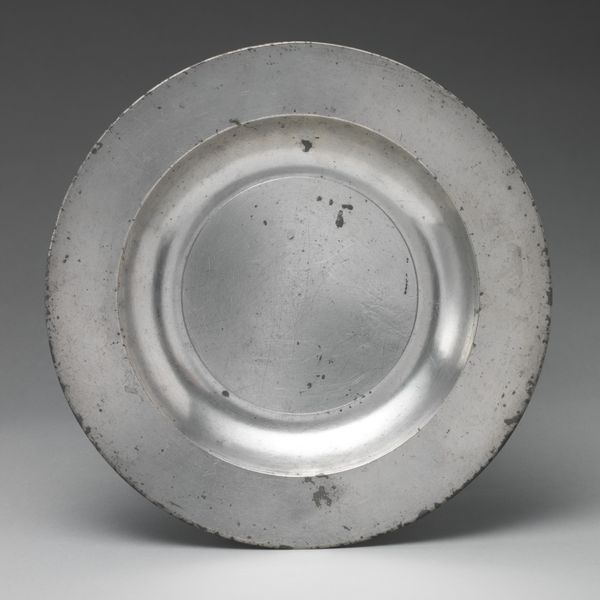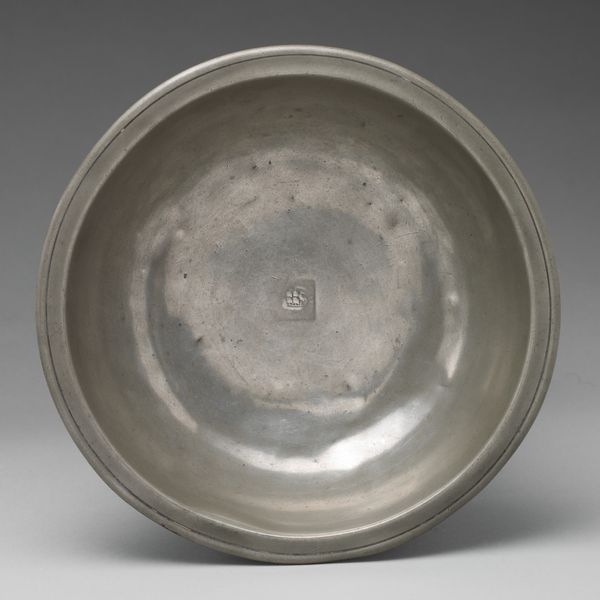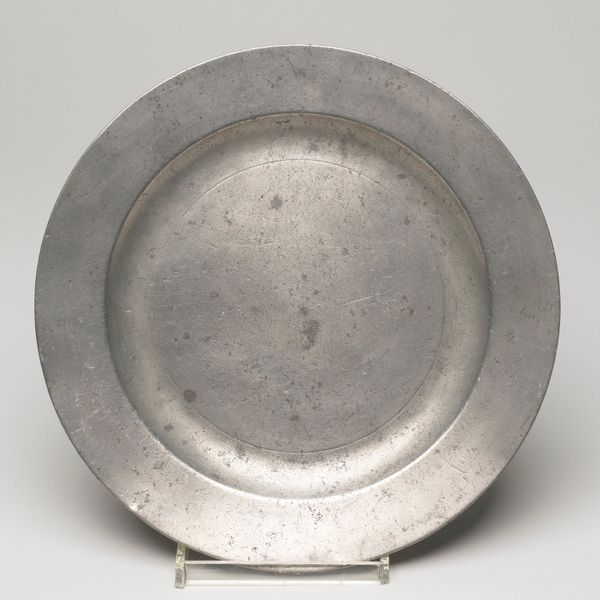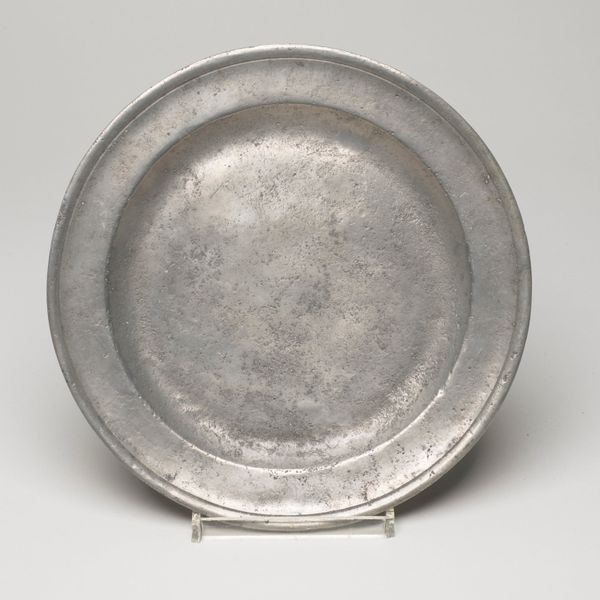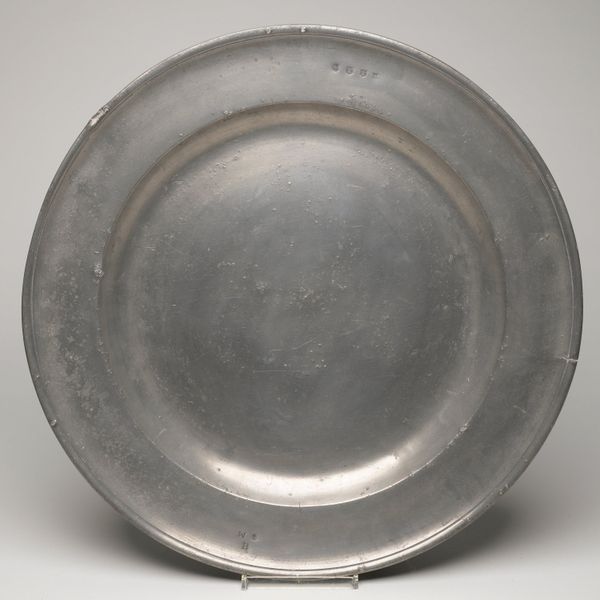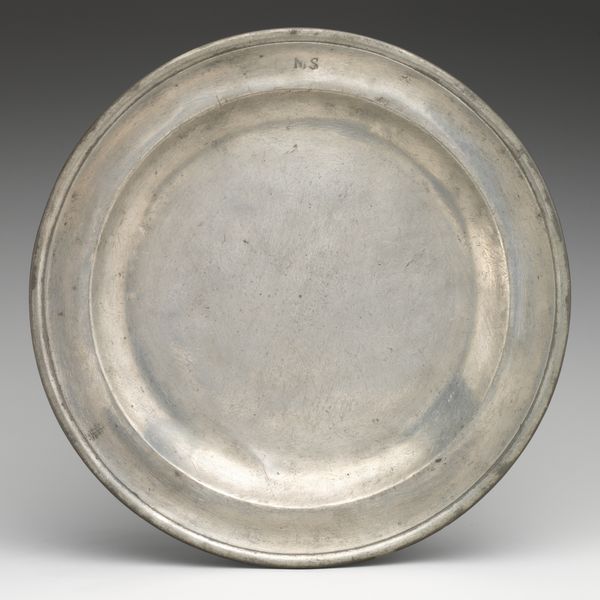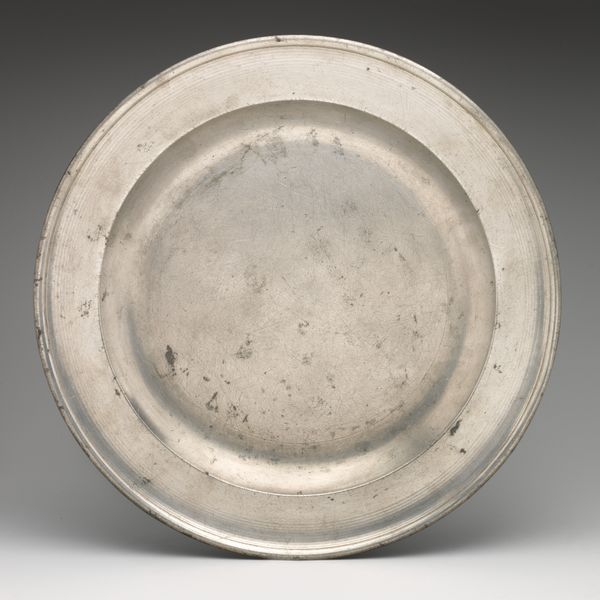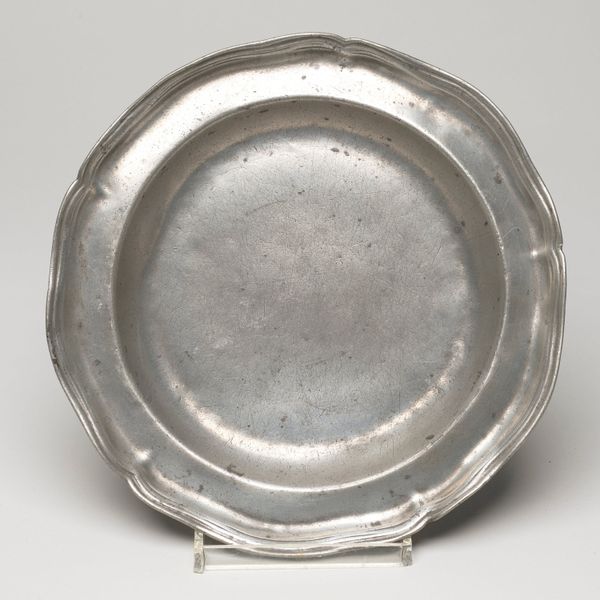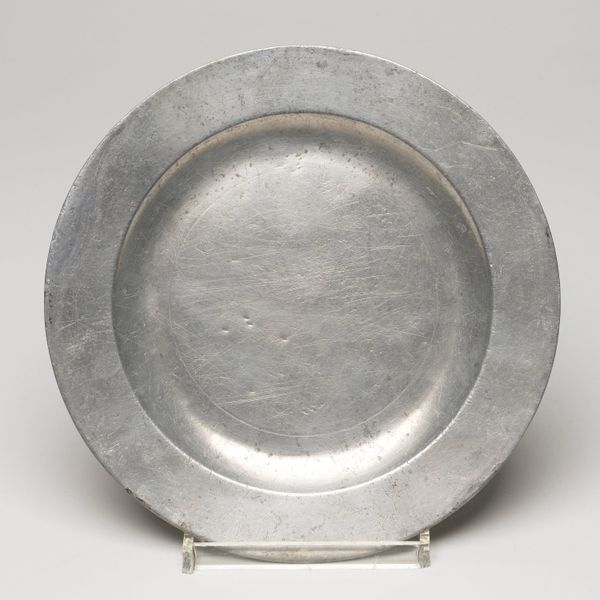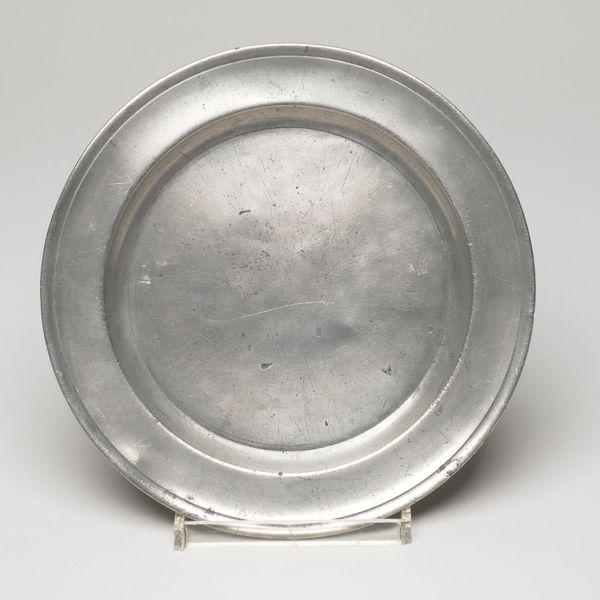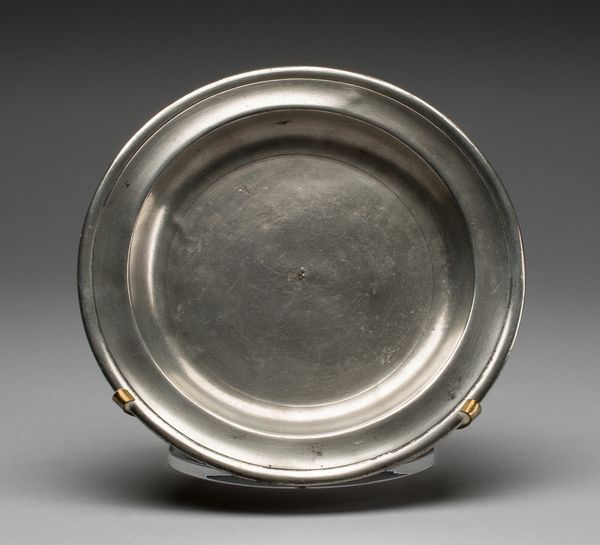
ceramic, sculpture
#
baroque
#
ceramic
#
sculpture
#
ceramic
#
decorative-art
Dimensions: Overall: 1 1/8 × 9 3/8 in. (2.9 × 23.8 cm)
Copyright: Public Domain
This soup plate was made of pewter, most likely in England, by Richard Going, an artist who lived from 1670 to 1770. In England, the Pewterers' Company regulated the standards of pewter manufacture and trade. This soup plate, while seemingly a functional object, reflects the social and economic dynamics of its time. Pewter, as a material, occupied a middle ground – more accessible than silver but more refined than earthenware. Examining Going's plate, we can consider the changing status of dining and domestic life in the 18th century. The plate’s design, material, and craftsmanship speak to evolving social customs around food consumption. To understand the soup plate further, we might look at the Pewterers' Company records to get insight into Going's professional life, or study household inventories to learn about the distribution of pewterware across different social strata. Everyday objects can tell us much about the culture that produced them.
Comments
No comments
Be the first to comment and join the conversation on the ultimate creative platform.
